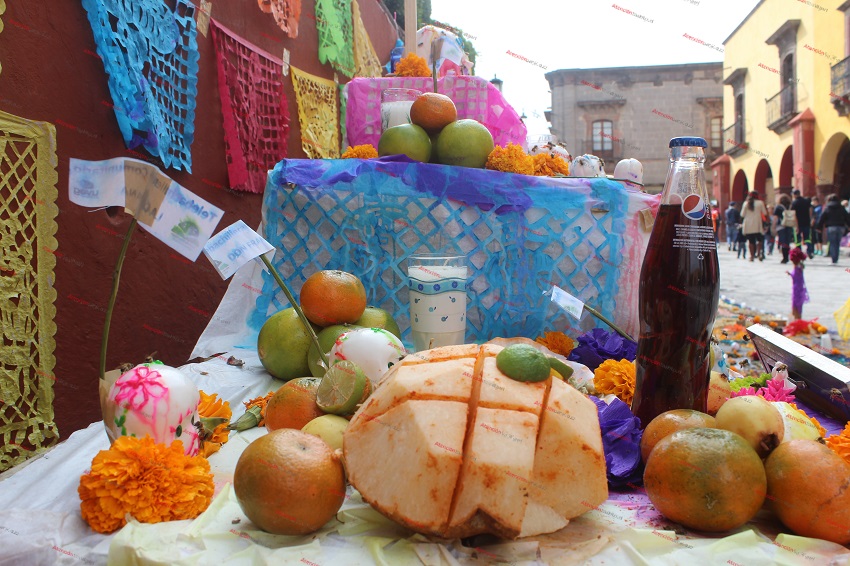The skull adorned for the Day of the Dead exists in the collective imagination, because on this day, bitter death is sweetly enjoyed, and tears become laughter. The aromas, colors and flavors of this celebration are mixed here on earth and taken to Mictlán, land of the dead.
Those who died before being baptized, or because of an accident, those in limbo, children or adults; they all visit us every year between Oct. 28 and Nov. 2. So they don’t leave after the visit as an empty skeleton, an altar is prepared for them with objects, food, or drinks that they liked while they were alive.
This year, some altars will be sober, others monumental, with tapestries composed of grains but no sawdust, a material that has been used in the past. Offerings will include giant catrinas (in Zeferino Gutiérrez and Parque Juárez), huge skeletons in Plaza Cívica, and skulls in Plaza San Antonio. No inauguration will take place, and everybody can decide which route to follow. Here’s a map of the locations of altars and the elements that they should contain:
A glass of water: For the souls to quench their thirst after their long journey, and to fortify their return to Mictlán.
Salt: To purify the body and soul so that the deceased’s body does not rot and may return the following year;
Candle: Illuminates the path to the deceased’s former home;
Incense: Cleans the house of impure spirits so the soul may return home safely;
Flowers: Represent festivity and keep visitors happy;
Petate (weaved mat): Serves as a surface on which to place the offering and on which the deceased may rest;
Dog: Used in children’s offerings so they may feel happy to arrive at the banquet. The dog also helps them return to Mictlán across the turbulent Chiconauhuapan River;
Bread: Added through Catholicism to represent the body of Christ.
Sugar cane and pan de muerto (seasonal bread): Represents the tzompantlis, altars which contained the skulls of the sacrificed. The pan de muerto represents the skulls of the defeated enemies and the canes represent the stalks on which they were impaled;
Optional elements: Portrait of the person to whom the offering is dedicated. It should be hidden and should only be seen through a mirror, indicating that the person can see him/herself but does not actually exist. Any type of food can be included, but the most common is chicken or turkey mole. Tamales, atole, chocolate, and liquor (for adults) can also be added, as well as sugar paste candies, colored paper cut-out flags, and any other element that the deceased may have liked in life.

